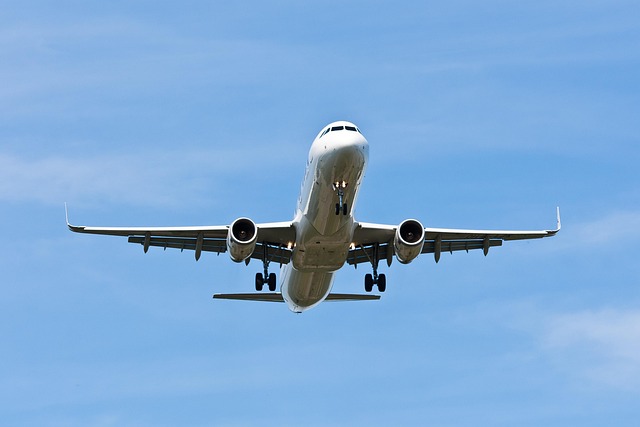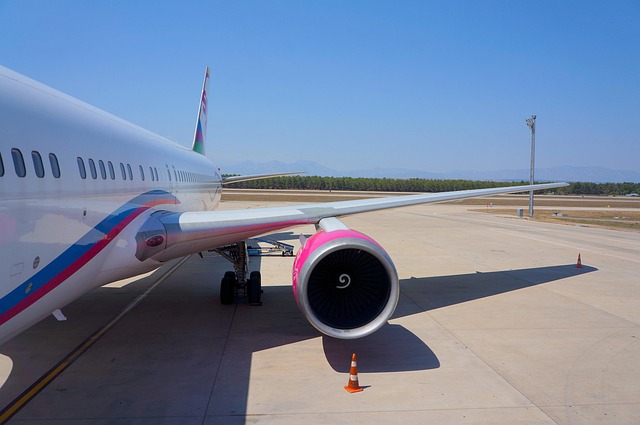Category: Savannah Round-Trip Airport Shuttle
Savannah Round-Trip Airport Shuttle: A Comprehensive Exploration
Introduction
In the dynamic world of transportation logistics, the Savannah Round-Trip Airport Shuttle (SRTAS) stands as a cornerstone solution for efficient and reliable airport connectivity. This article delves into the intricate details of SRTAS, exploring its multifaceted operations, global impact, and the transformative potential it holds for the future of travel. By examining various facets—from technological innovations to regulatory frameworks—we aim to provide an in-depth understanding of this vital service, offering insights that can shape its evolution and enhance passenger experiences worldwide.
Understanding Savannah Round-Trip Airport Shuttle: A Definition and Its Components
The Savannah Round-Trip Airport Shuttle is a specialized transportation service designed to facilitate seamless travel between cities and airports, focusing on round-trip trips. It involves a network of vehicles, routes, and technology that work in harmony to provide door-to-door transportation for passengers. Key components include:
- Fleet Management: A diverse fleet of vehicles, from vans to buses, equipped with GPS tracking and real-time communication systems to ensure efficient operations.
- Route Optimization: Sophisticated algorithms and data analytics are employed to design optimal routes, minimizing travel time and fuel consumption.
- Online Booking and Payment: User-friendly booking platforms allow passengers to reserve trips online, providing price estimates and secure payment options.
- Real-time Tracking: Passengers can track their shuttle’s location, ensuring timely arrivals at the airport or hotel pick-up points.
- Customer Support: 24/7 customer service centers handle bookings, inquiries, and provide assistance to travelers.
Historically, SRTAS emerged as a response to the growing demand for convenient and cost-effective airport transportation options. With the rise of air travel, urban centers needed efficient solutions to connect citizens with airports, leading to the development of dedicated shuttle services like SRTAS. Over time, these shuttles evolved to incorporate advanced technologies and services, enhancing their reliability and appeal.
Global Impact and Trends Shaping SRTAS
SRTAS has left a significant footprint on the global transportation landscape, particularly in urban areas with high air travel demand. Key trends shaping its development include:
-
Urbanization: Rapid urbanization drives the need for efficient airport shuttle services as city populations grow, increasing the demand for convenient travel options.
-
Sustainability Concerns: A growing emphasis on environmental sustainability has led to the adoption of eco-friendly vehicles and routes in many SRTAS operations, reducing carbon footprints.
-
Digital Transformation: The integration of technology, such as mobile apps, online booking systems, and real-time tracking, has revolutionized passenger experiences, making travel planning smoother and more efficient.
-
Competitive Market: The emergence of ride-sharing services and traditional taxi companies creates a competitive landscape, pushing SRTAS providers to innovate and differentiate their services.
Regional variations in SRTAS operations reflect local needs and preferences:
| Region | Key Trends/Differences |
|---|---|
| North America | Focus on high-frequency service and integration with public transportation networks. |
| Europe | Emphasis on sustainability and low-emission vehicles, with robust regulations supporting these initiatives. |
| Asia-Pacific | Rapid expansion due to urbanization, with a significant rise in demand for private shuttle services among business travelers. |
| Latin America | Adoption of technology for route optimization and online booking, coupled with a growing preference for shared mobility options. |
Economic Considerations: Market Dynamics and Impact
The economic landscape surrounding SRTAS is complex, involving various stakeholders and market forces:
-
Market Size and Growth: According to a 2022 report by Grand View Research, the global airport transportation market size was valued at USD 61.3 billion in 2021 and is expected to grow at a CAGR of 7.8% from 2022 to 2030. SRTAS services contribute significantly to this market, catering to both leisure and business travelers.
-
Revenue Streams: Revenue for SRTAS operators comes from various sources, including fixed route services, private charter trips, and partnerships with hotels, airports, and tour operators. Dynamic pricing models, offering lower rates during off-peak hours, are becoming common to optimize revenue.
-
Investment Patterns: The industry attracts investments from private equity firms, venture capitalists, and transportation infrastructure developers. These investments fuel the adoption of new technologies, fleet upgrades, and expansion into new markets.
-
Economic Impact: SRTAS services stimulate local economies by providing employment opportunities, supporting tourism, and facilitating business travel. They also contribute to urban mobility solutions, reducing traffic congestion and environmental pollution.
Technological Advancements: Revolutionizing the SRTAS Experience
Technology plays a pivotal role in shaping the future of SRTAS, enhancing efficiency, safety, and passenger satisfaction:
-
Autonomous Vehicles: The development of self-driving shuttles is an emerging trend, offering potential benefits such as reduced operational costs, improved road safety, and enhanced passenger comfort. However, regulatory hurdles and public acceptance remain challenges to widespread adoption.
-
Smart Traffic Management: Advanced traffic management systems utilize AI and IoT devices to optimize shuttle routing, predict travel times, and minimize delays caused by traffic congestion.
-
Mobile Apps: Dedicated mobile applications provide passengers with real-time tracking, seamless booking, and push notifications for trip updates. These apps enhance user experience and enable personalized services.
-
Biometric Payment Systems: Contactless payment options using biometric identification, such as facial recognition or fingerprint scanning, are being integrated into SRTAS services, offering convenience and security.
-
Data Analytics: Analyzing passenger data helps operators optimize routes, predict demand patterns, and develop targeted marketing strategies. This data-driven approach improves operational efficiency and customer satisfaction.
Policy and Regulation: Navigating the Legal Landscape
The regulatory environment surrounding SRTAS is vital to ensuring safety, fair competition, and consumer protection. Key policies and regulations include:
-
Transportation Network Regulations: Local governments often regulate SRTAS operations through licensing requirements, vehicle standards, and driver training mandates. These ensure the safety and reliability of services.
-
Environmental Standards: Emission controls and fuel efficiency standards are implemented to reduce the environmental impact of shuttle fleets. Incentives for adopting low-emission vehicles are also common policy interventions.
-
Consumer Protection Laws: These laws safeguard passenger rights, covering areas such as pricing transparency, cancellation policies, and liability in case of accidents or delays.
-
Data Privacy Regulations: With the increasing collection of passenger data, regulations like GDPR (General Data Protection Regulation) in Europe and CCPA (California Consumer Privacy Act) in the US ensure that SRTAS operators handle customer information securely and transparently.
Challenges and Criticisms: Overcoming Barriers to Success
Despite its numerous advantages, SRTAS faces several challenges and criticisms that require strategic solutions:
-
Traffic Congestion: Navigating urban traffic remains a significant challenge, leading to delays and increased operational costs. Smart city initiatives and collaboration with local transportation authorities can help mitigate these issues.
-
Environmental Concerns: While SRTAS contributes to reduced carbon emissions compared to private cars, the industry still faces criticism for its environmental impact. Transitioning to electric vehicles and adopting eco-friendly practices can address these concerns.
-
Competition from Ride-Sharing Services: The rise of popular ride-sharing apps has posed a competitive threat to SRTAS providers. Differentiating services through premium offerings, personalized experiences, and loyalty programs can help maintain market share.
-
Regulatory Compliance: Staying compliant with evolving regulations can be complex and resource-intensive for operators, especially when operating across multiple jurisdictions. Standardized regulations and digital platforms for compliance tracking could streamline this process.
Case Studies: Real-World Success Stories
1. New York City, USA: The Ultimate Urban Shuttle System
New York City’s comprehensive airport shuttle system is a prime example of successful SRTAS implementation. Operated by multiple private providers under city regulations, it features:
- Vast Network: Over 20 shuttle companies operate out of JFK, LaGuardia, and Newark airports, serving all five boroughs of New York City.
- Diverse Fleet: The system utilizes a mix of vans, buses, and shared ride vehicles to accommodate varying passenger needs.
- Real-time Tracking: Passengers can track shuttles using mobile apps, ensuring they make informed decisions about their travel options.
- Integration with Public Transport: Shuttle services connect seamlessly with the city’s subway, bus, and taxi networks, providing a comprehensive urban mobility solution.
2. London, UK: Eco-Friendly Airport Transfers
London’s airport shuttle industry has embraced sustainability as a core value, leading to innovative practices. Key successes include:
- Electric Shuttle Fleet: Many operators have transitioned to all-electric vehicles, reducing carbon emissions and offering quieter, cleaner transportation options.
- Route Optimization Software: Advanced algorithms optimize routes, minimizing traffic impact and improving fuel efficiency.
- Collaborative Initiatives: Industry bodies collaborate with local authorities on initiatives like the “Sustainable Urban Mobility Plan,” promoting shared mobility solutions.
3. Tokyo, Japan: Efficient and Tech-Savvy Airport Transport
Tokyo’s airport shuttle services showcase the perfect blend of efficiency and technology:
- High-Frequency Services: Shuttle buses operate at frequent intervals, ensuring minimal wait times for passengers arriving or departing from Narita and Haneda airports.
- Mobile App Integration: The “Tokyo Airport Shuttle” app allows users to book trips, track shuttles in real-time, and receive notifications for gate changes or delays.
- Loyalty Programs: Rewards programs encourage repeat business, fostering customer loyalty and long-term relationships with operators.
Future Prospects: Emerging Trends and Strategic Considerations
The future of SRTAS is brimming with opportunities and potential challenges, as the industry continues to evolve in response to changing traveler demands and technological advancements. Here are some key trends and strategic considerations:
-
Autonomous Vehicles: As autonomous driving technology matures, SRTAS operators will increasingly adopt self-driving shuttles, improving efficiency and passenger safety. However, regulatory clarity and public acceptance will be crucial for widespread implementation.
-
Sustainable Transport: The push for sustainability will drive the adoption of electric vehicles, fuel cells, and eco-friendly practices, positioning SRTAS as an environmentally conscious transportation option.
-
Personalized Experiences: Advanced data analytics and AI will enable personalized shuttle services, catering to individual passenger preferences, such as preferred seating, in-cabin entertainment, or customized route options.
-
Dynamic Pricing and Demand-Responsive Services: Dynamic pricing models will become more sophisticated, offering discounts during off-peak hours and surge pricing during peak travel times. Demand-responsive services, adjusting shuttle frequency based on real-time passenger demand, will also gain popularity.
-
International Expansion: With the increasing globalization of travel, SRTAS operators are poised for international expansion, particularly in regions with high air travel demand and robust infrastructure, such as Asia-Pacific and Europe.
Conclusion: Shaping the Future of Airport Connectivity
The Savannah Round-Trip Airport Shuttle has evolved from a niche transportation service to a vital link in the global travel ecosystem. Its ability to provide efficient, convenient, and reliable airport connectivity is transforming urban mobility and enhancing the overall travel experience. As technology advances, regulatory frameworks evolve, and traveler expectations rise, SRTAS stands at a pivotal point, ready to embrace innovation and shape its future.
By addressing challenges, adopting sustainable practices, and leveraging emerging technologies, SRTAS operators can ensure their services remain competitive, cost-effective, and environmentally responsible. The industry’s potential for growth is immense, with opportunities to expand globally, cater to diverse passenger needs, and revolutionize urban airport transportation.
FAQ Section: Addressing Common Concerns
Q: Are SRTAS services more expensive than traditional taxi rides?
A: Pricing for SRTAS trips can vary, but many operators offer competitive rates, especially during off-peak hours. Dynamic pricing models ensure that passengers pay fair prices based on market demand, sometimes even lower than traditional taxis.
Q: How do I know if a shuttle service is reliable?
A: Reliable SRTAS services are characterized by consistent scheduling, accurate real-time tracking, and efficient route planning. Reading reviews from previous passengers and checking the operator’s reputation can help ensure a dependable experience.
Q: Can I book SRTAS trips online?
A: Absolutely! Online booking platforms are a cornerstone of modern SRTAS operations. Users can easily reserve trips, choose seats (if available), and receive instant confirmations via email or mobile notifications.
Q: Are SRTAS shuttles environmentally friendly?
A: Many SRTAS operators are committed to sustainability, employing electric vehicles, eco-friendly practices, and optimizing routes to minimize environmental impact. While there’s room for improvement, the industry is making strides towards becoming a greener transportation option.
Q: How do I track my shuttle in real-time?
A: Most SRTAS services provide real-time tracking through mobile apps or online booking platforms. These tools allow users to see their shuttle’s location, estimated arrival times, and any delays or changes to their trip.
Savannah Shuttle: Seamless Round-Trip Getaways for All Trips
Streamline Savannah Travel: Round-Trip Airport Shuttle Luxury

Platinum Executive Coaches offers a luxurious and efficient Savannah Round-Trip Airport Shuttle serv…….
Savannah’s Top Shuttle: Clean, Spacious, Professional Drivers

Platinum Executive Coaches offers a superior Savannah Round-Trip Airport Shuttle experience with cle…….
One Booking: Seamless Savannah Airport Round-Trip Shuttle
Savannah Shuttle: Effortless Travel for Every Occasion

Experience hassle-free travel with Savannah Round-Trip Airport Shuttle services from Platinum Execut…….
Simplify Travel with Savannah’s Reliable Round-Trip Airport Shuttle Service
Savannah Round-Trip Airport Shuttle: Clean, Spacious Vehicles for Enhanced Comfort and Safety
Savannah Shuttle: Clean, Spacious Rides with Professional Drivers

In Savannah, the demand for clean and spacious vehicles has surged, driving the popularity of profes…….













